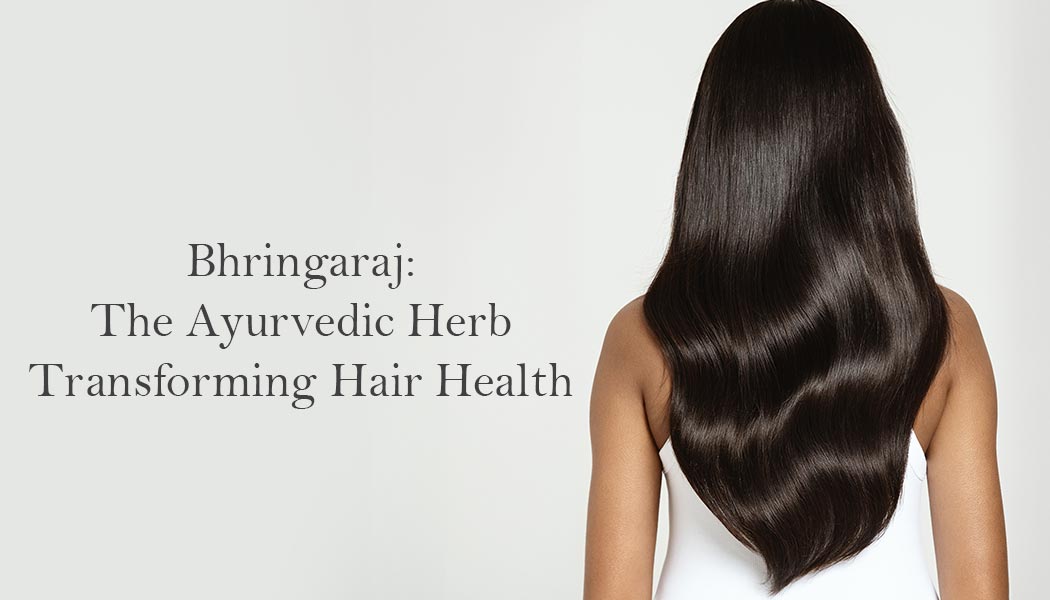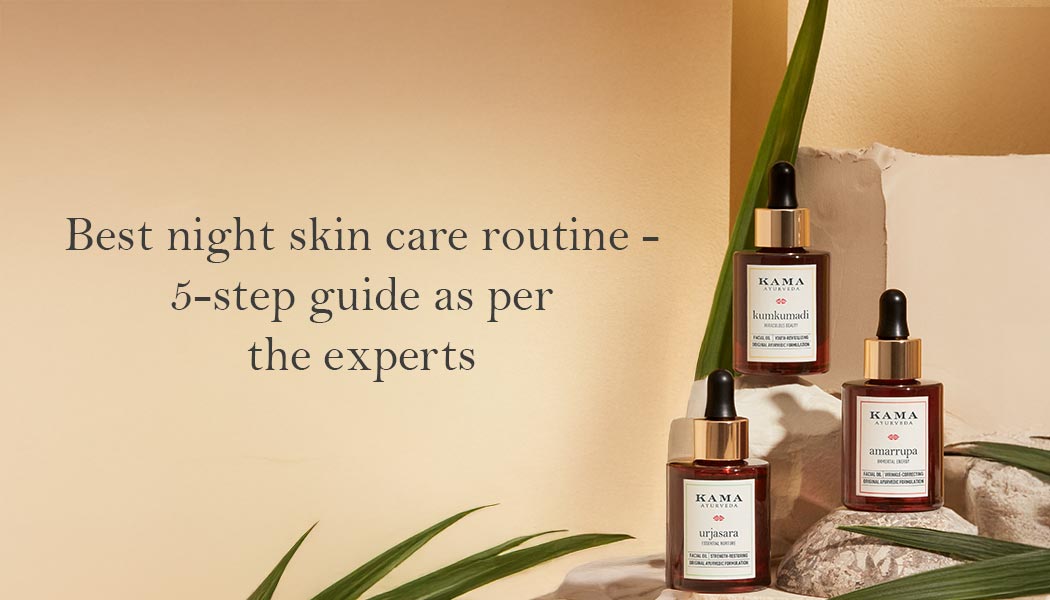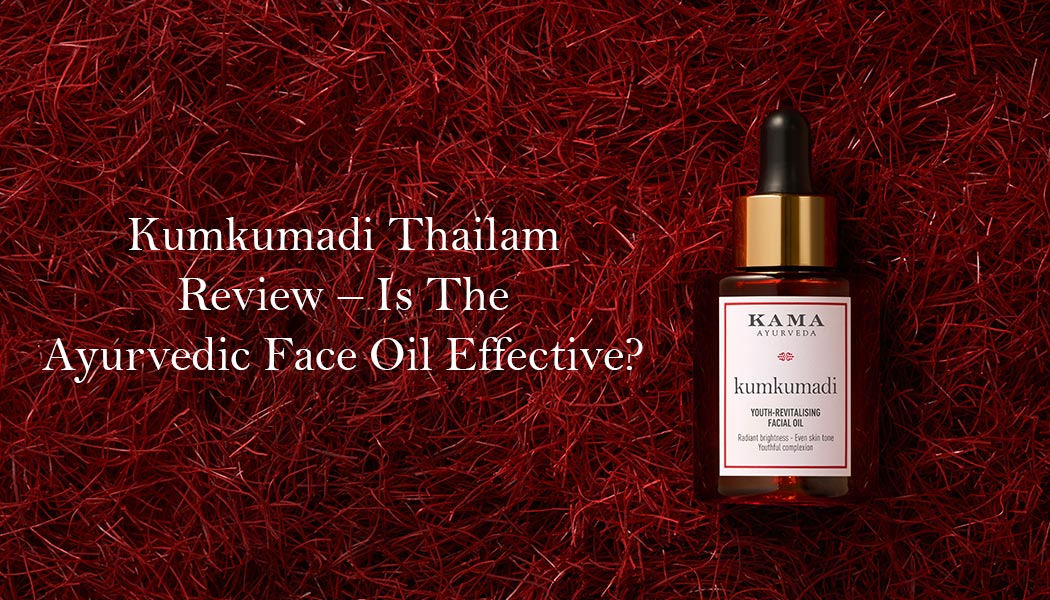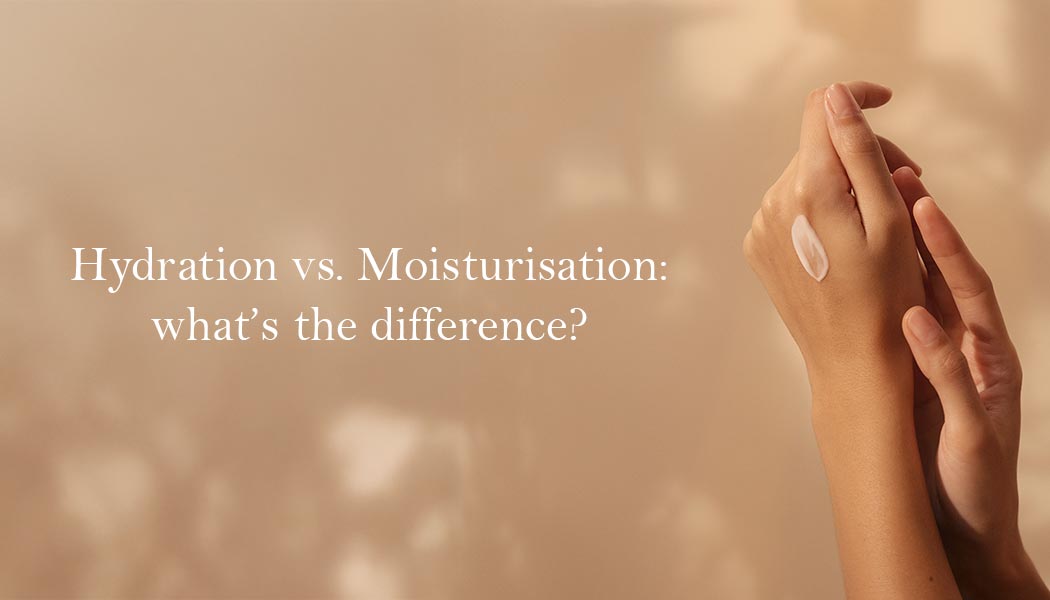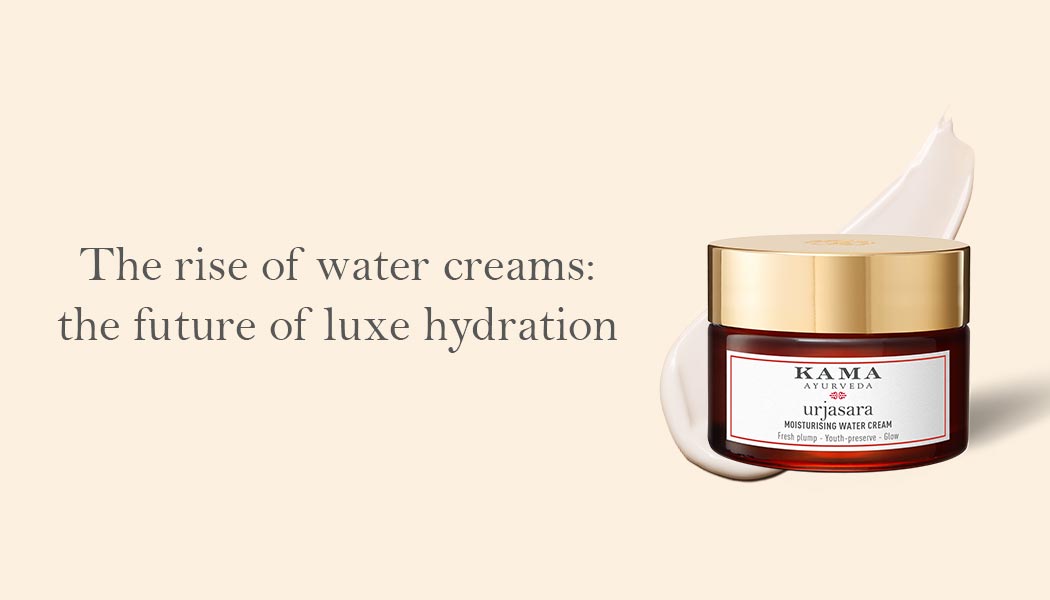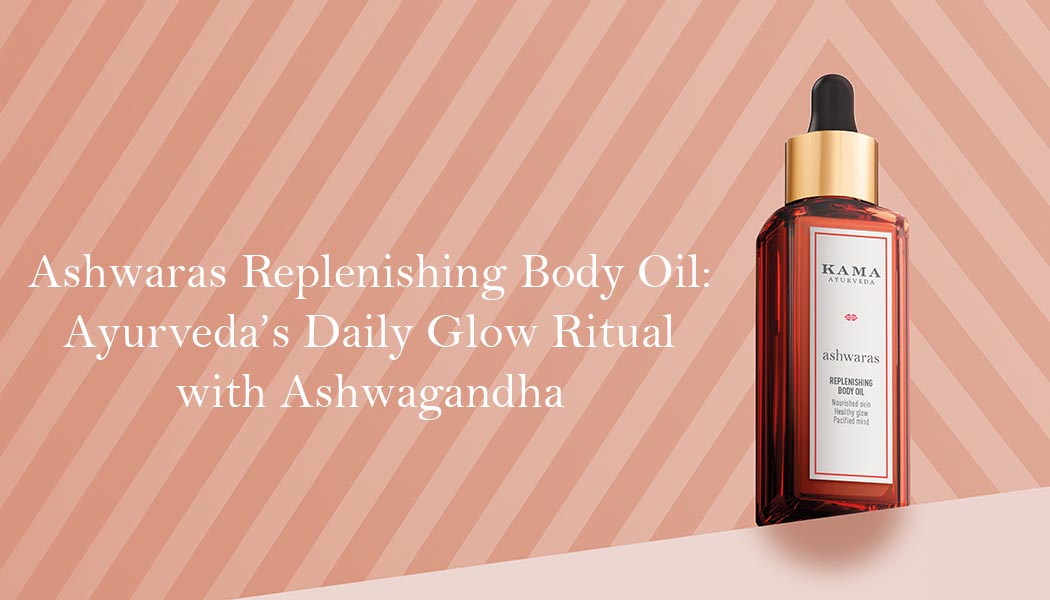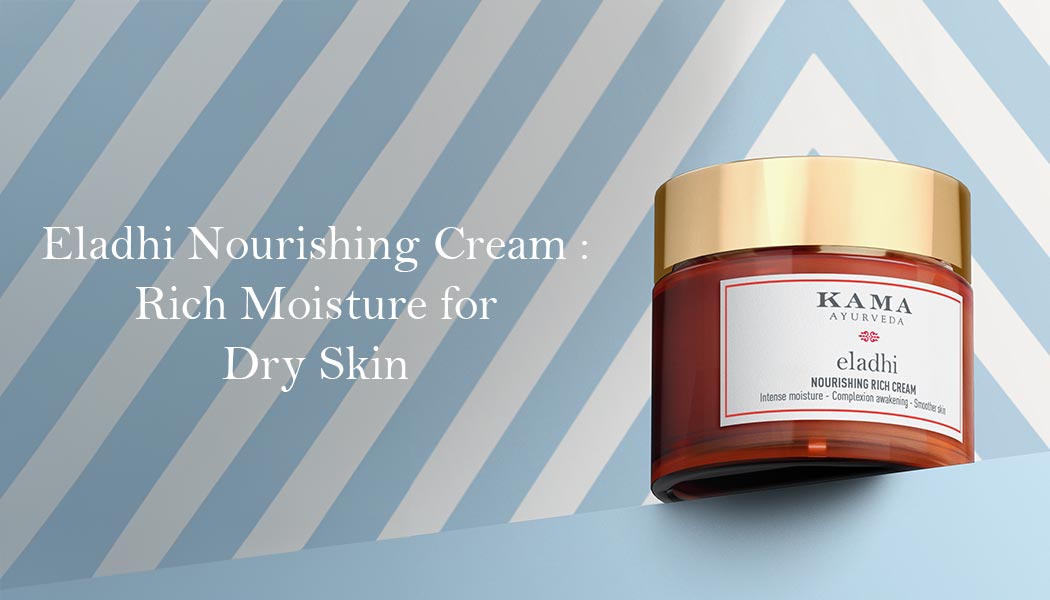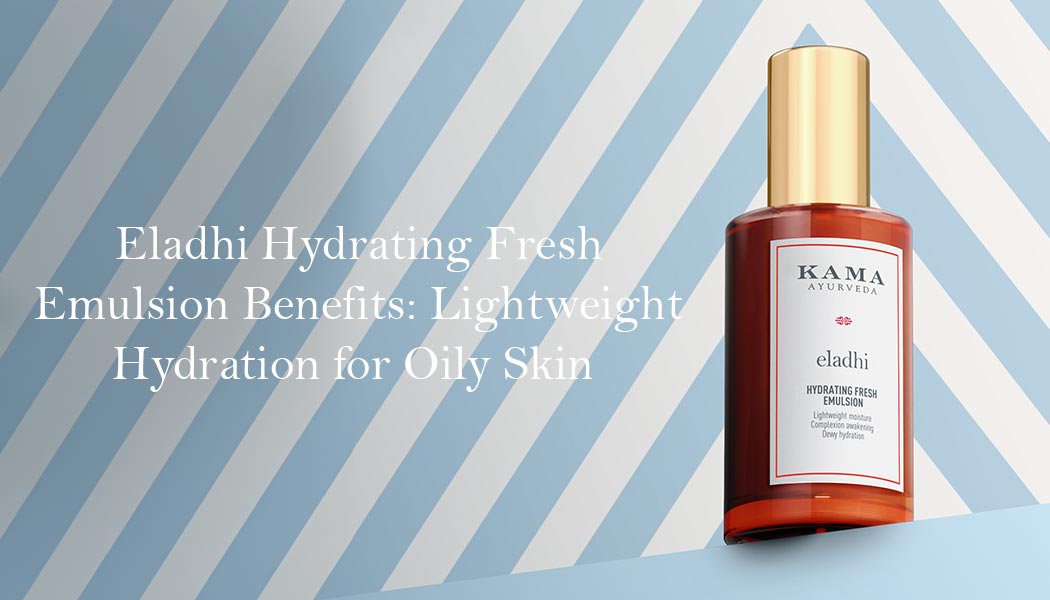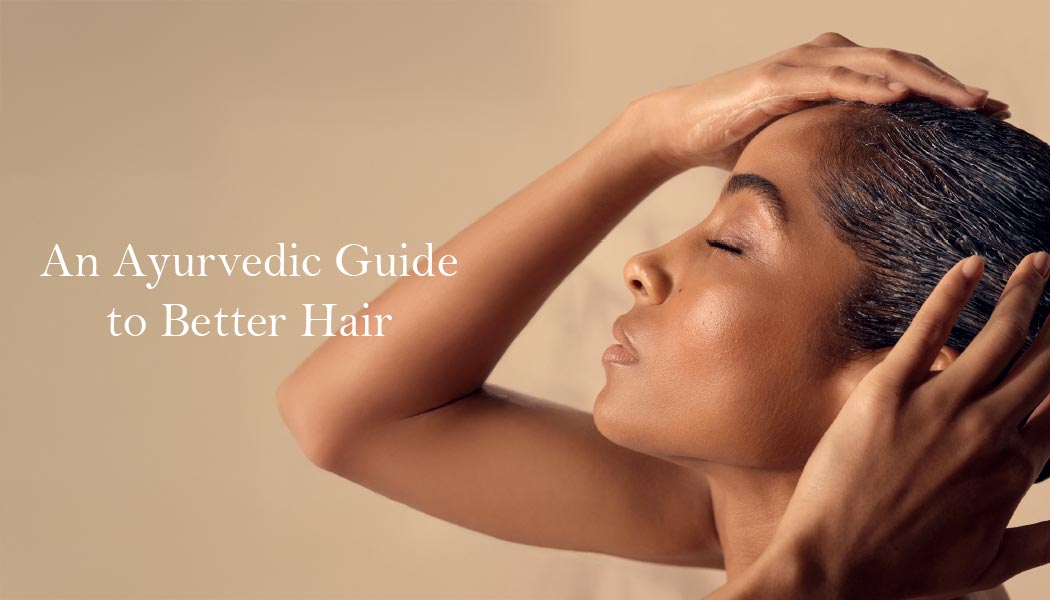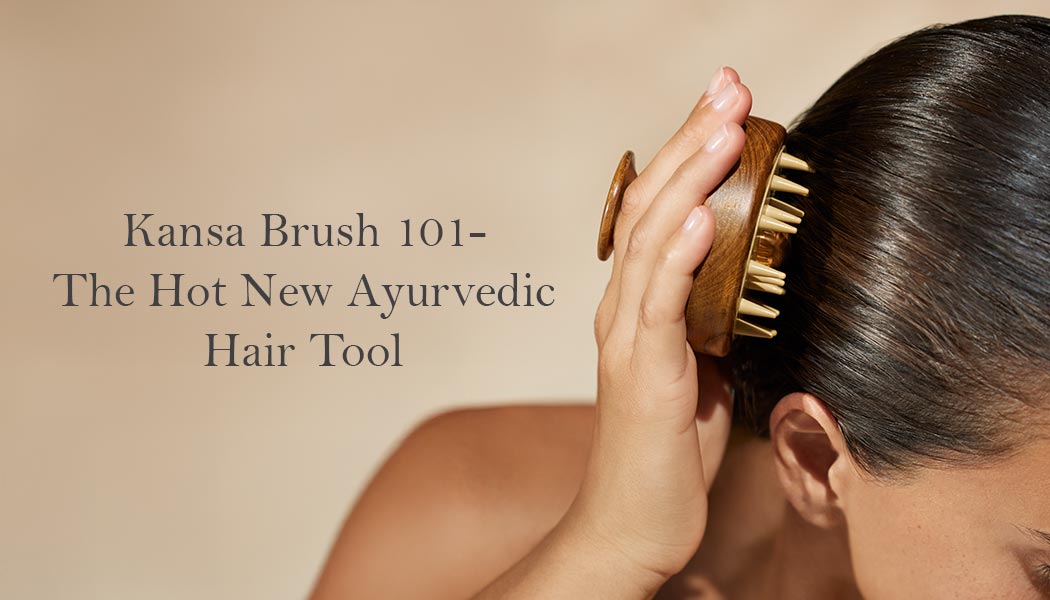- 8 July 2020
- 10 mins read
Dyeing hair is the most common way to color grey hair and has become a part of the hair care routine for most people.
However, the color of the dye on hair isn’t permanent and wears off over time, requiring its re-application every few weeks.
This raises many concerns among people who dye hair regularly - Which hair dyes are safe to use frequently? Is it better to use a natural hair dye? How to make hair black naturally?
Studies have revealed that frequent hair colouring with chemical dyes causes hair damage. For this reason, more and more people are turning to natural hair dyes to color their hair.
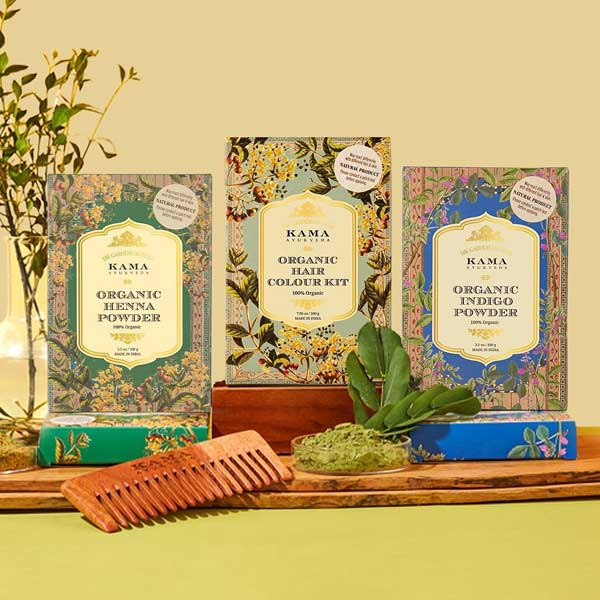
If you are new to the world of dyeing hair naturally, you might have many questions. Don't worry; this step-by-step guide will introduce you to this hair dyeing method that is safe, completely free of chemicals, and good for your hair.
We’ll also address the most common doubts and apprehensions in the FAQ section at the end of the article.
Let's begin by understanding two of the most popular and widely used natural hair dye - Indigo Powder.
What Is Indigo Powder - All About The Natural Hair Dye
Did you know that Indigo is one of the oldest known dyes? In the earlier days, it was extensively used for dyeing textiles. Derived by grinding leaves of the plant genre Indigofera, Indigo was a considered precious commodity, referred to as ‘blue gold’.
Over the years, people discovered the use of Indigo to colour hair black naturally, and the dye became popular as Indigo hair colour.

With time, the synthetic variations of Indigo Hair Colour have also gained popularity. However, it is only pure Indigo powder derived from Indigofera Tinctoria that remains best suited for hair as a natural hair dye. Do not get confused by the numerous options available to buy indigo powder online. To find the best Indigo Powder for hair, check the ingredients label and ensure that the Indigo powder is 100% natural and organic.
Natural and Organic Indigo powder is significantly different from its synthetic alternatives. It doesn’t contain ammonia or PPD or other chemicals like most hair dyes.
We’ll discuss the many benefits of using Indigo hair dye to color your hair in the next section. Now, let’s move on to understanding how the pure and organic Indigo dye is obtained from the Indigo plant.
How Is Indigo Powder For Hair Made From The Indigo Plant?
To produce natural Indigo powder, the leaves from the Indigo plant are soaked overnight, which results in the water turning blue. As you can see in the picture below, this results in a sluggish blue mixture of Indigo leaves in water.

This mixture is then sun-dried till the leaves dry up and become crisp. When the leaves are completely dried up, they are powdered to obtain the Indigo powder.
Though this simple process of turning green leaves into brilliant blue dye through fermentation has been practiced for thousands of years, it still seems magical! Doesn’t it?
Since no chemicals are required in this process, the final Indigo dye obtained is not only completely safe but also beneficial for hair in many ways.
What Are The Benefits of Indigo Powder For Hair?
Isn’t it amazing that dyeing your hair naturally can improve your hair’s health? Natural hair colors lend your tresses the tint you desire without any damage.
But before we jump to the steps to dye your hair, let us walk you through some of the well-known benefits of using Indigo Powder on your hair -
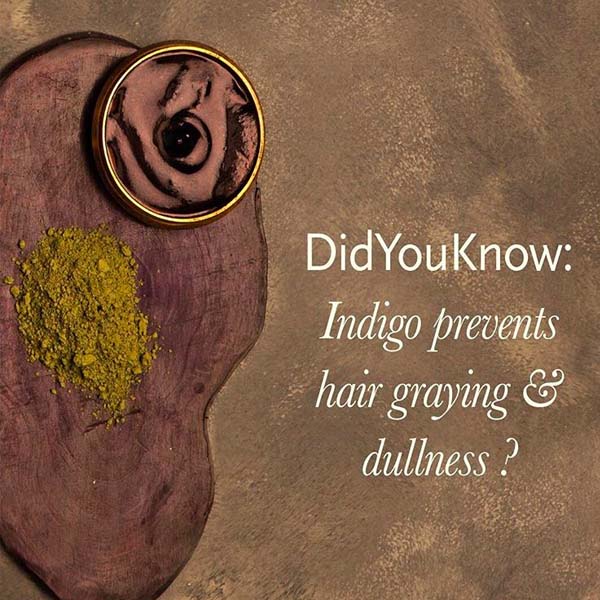
- Prevents Hair Fall:
Indigo powder is a boon for those suffering from hair fall. A mixture of indigo powder and hair oil, when massaged into the scalp, fortifies hair follicles, preventing hair fall. Regular application also counters baldness and promotes hair volume and growth.
- Eliminates Dandruff:
Indigo powder acts as a cleansing agent, removing greasiness and grime from the scalp. It balances the scalp, preventing it from becoming too oily or dry, which often leads to dandruff. Regular use minimizes dryness, itchiness, and reduces the risk of fungal infections.
- Promotes Hair Quality:
Factors like pollution, excessive use of heating tools, and harsh chemical treatments can deteriorate hair quality. Indigo powder counters these effects, resulting in bouncier, glossier, and thicker hair. When combined with coconut oil, it nourishes the scalp, providing essential nutrients that strengthen the hair and enhance its health.
- Soothes Hair:
Beyond improving hair color, indigo powder soothes the scalp and hair follicles. Its cooling effect provides a refreshing sensation, offering relaxation and calming both the body and mind.
- Treats Premature Greying of Hair:
Indigo powder serves as a natural remedy against premature greying, imparting a rich black hue to the hair. Unlike chemical-based dyes that can exacerbate greying and weaken hair pigmentation, indigo is gentle and beneficial.
It not only strengthens the hair follicles but is also versatile in its coloring capabilities. When mixed in varying proportions with henna, it allows for a palette of appealing shades – from browns to cherries and mahogany – without causing hair damage.
Are you wondering how this natural blue dye can help you dye gray hair black or brown? Then here’s the secret - Indigo powder is used in combination with henna powder. Simply follow the steps in the next section to make your black hair naturally.
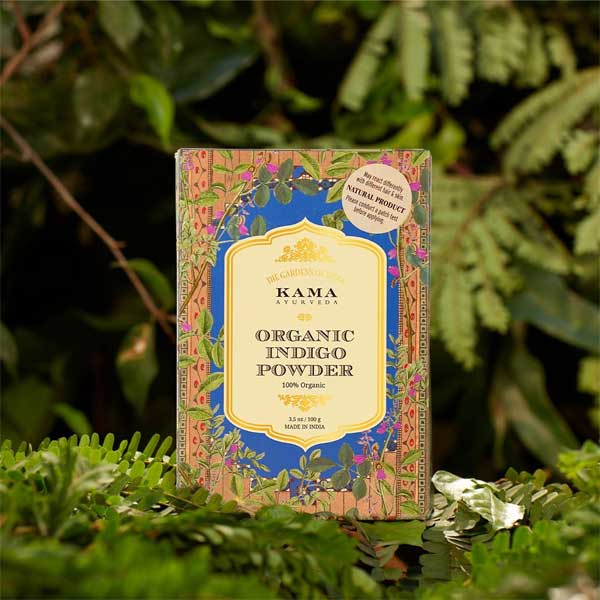
What experts say -
“The magic of indigo transcends beyond mere color. Historically, in various cultures, it wasn't just a dye but also a symbol of wealth and vitality. This blue gold, so to speak, doesn’t just cloak the hair with a lush color, but also envelops it in a sheath of protection against environmental elements.” - Dr. Aruna Purohit
How To Use Indigo Powder For Hair?
Are you wondering how this natural blue dye (Indigo) can help you dye gray hair black or brown? Then here’s the secret - Indigo powder is used in combination with henna powder. Using indigo powder for hair is a natural way to color your hair black or deepen the color of previously applied henna to achieve a brown to black shade.
Simply follow the steps in the next section to make your hair black naturally.
How To Use Henna And Indigo To Color Your Hair Black?
Since Indigo powder is a blue dye, applying it directly to your hair will leave an intriguing blue tint. However, to get darker shades like brown, auburn or black, you need to prime your hair with Henna treatment before using indigo powder.
Henna, as a natural hair dye, needs no introduction. The ancient science of Ayurveda relies on this naturally occurring ingredient for hair coloring and conditioning.
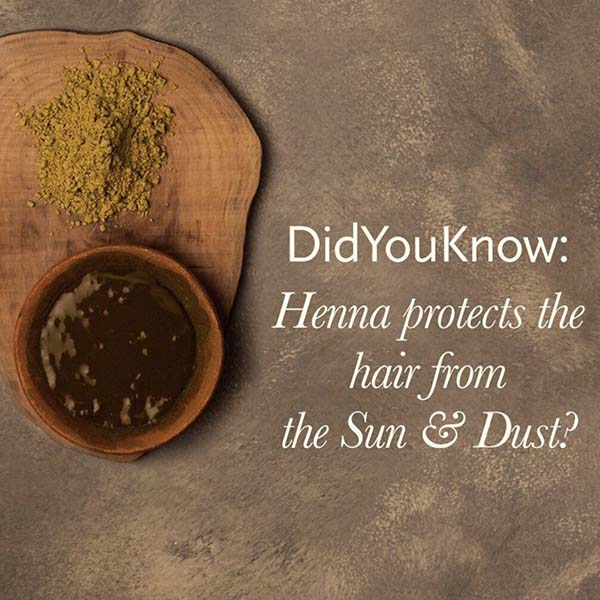
Note - The steps for coloring vary from brand to brand. The steps listed below are suitable when using Kama Ayurveda’s Organic Indigo Powder and Organic Henna Powder (also available together as Kama Ayurveda’s Organic Hair Colour Kit)
To color your hair black, you need to break the whole process down in two steps. Just applying the mixture of Henna powder and Indigo powder directly on your hair won’t give desired results and isn’t advisable. So if you’re looking for those gorgeous black tresses, here’s what you need to do -
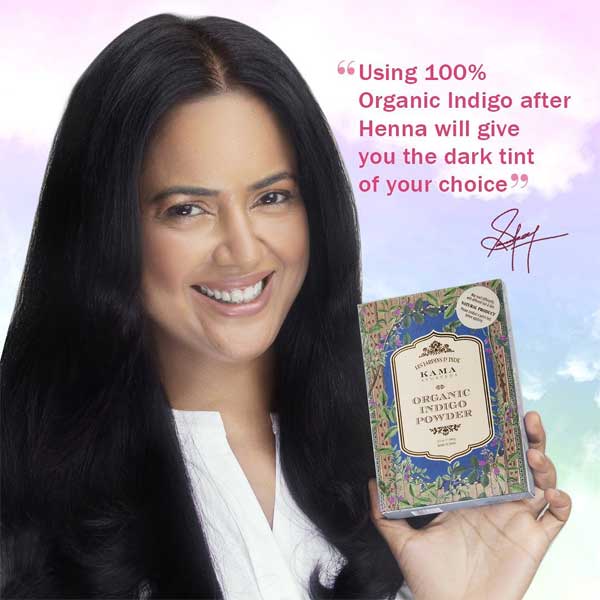
Step 1 - Treat your hair with Henna.
- In a mixing bowl, soak the Henna Powder (100 gms for short hair, 200 gms for shoulder-length hair, 300 gms for long hair) with Tea Water or Coffee Water overnight. (Adding coffee makes the red color of henna more visible.) Add only a dash of Lemon Juice if you wish.
- Add Yoghurt or Egg for additional conditioning.
- The next day, apply the paste on clean, product-free hair for 45-60 minutes, depending on preferred intensity.
- Rinse thoroughly only with water, repeating as many times as you intuitively need. Do not use shampoo.
Step 2 - Treat your hair with Indigo.
- After rinsing your hair, let them dry.
- Mix the Indigo Powder (100 gms for short hair, 200 gms for shoulder-length hair, 300 gms for long hair) in warm water to prepare a paste.
- Apply on your hair, using gloves if applying with your hands, or a spatula.
- Leave on for 45 minutes, or more, depending on preferred intensity. It’s advisable to keep it on hair for up to 2 hours to get rich black color.
- Rinse thoroughly with water.
- Wash your hair with a cleansing shampoo the next day.
Following these two steps will result in the desired natural black hair color. You can use this method to color your hair twice-thrice a month.
How To Use Henna To Color Your Hair Brown?
Some brands recommend creating a mixture of Henna Powder and Indigo Powder to get brown hair. However, when you’re using Kama’s Natural Hair Colour, you only need to apply Henna to dye your hair brown naturally.
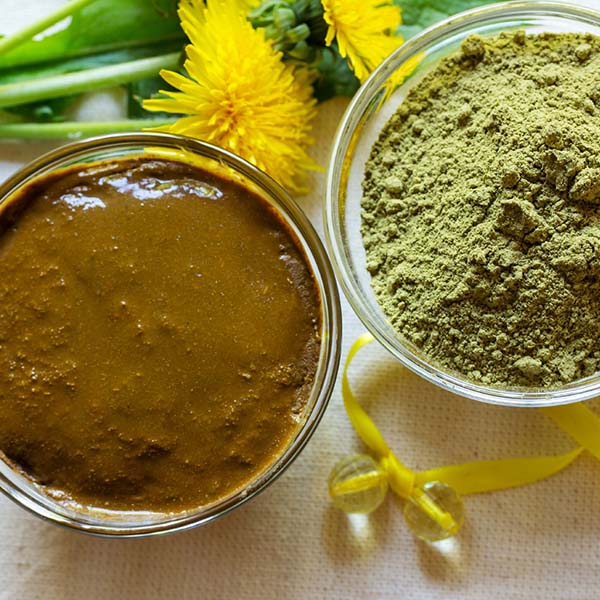
Follow these simple steps, to get brown to reddish-brown hair.
- Soak the Henna Powder (100 gms for short hair, 200 gms for shoulder-length hair, 300 gms for long hair) in an iron skillet in Tea Water or Coffee Water overnight. (Adding coffee makes the red color of henna more visible.)
- Add only a dash of Lemon Juice if you wish. Add Yoghurt or Egg for additional conditioning.
- The next day, apply the paste on clean, product-free hair for 2 hours, depending on preferred intensity.
- Rinse well with water, repeating as many times as you intuitively need. Do not use shampoo.
- Wash your hair with a cleansing shampoo the next day. You can choose shampoos with Ayurvedic ingredients like Hibiscus for hair. Unlike other shampoos, natural shampoos made from Hibiscus cleanse the hair without stripping the scalp from its natural oils.
Also read - How to use Henna to dye and nourish your hair?
How To Apply Henna Powder And Indigo Powder On Hair?
The steps to dye your hair are straightforward and easy. However, if you’re dying your hair by yourself, you might struggle in the beginning. Here are a few steps that you can follow to make the process comfortable and clean.
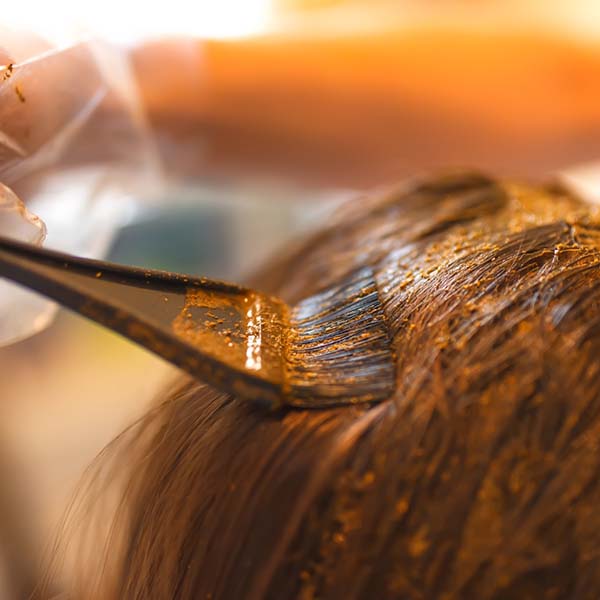
- Before you start applying, make sure that the paste is of the right consistency. It should be pudding-like, neither too dry nor too wet and runny.
- To avoid making a mess, drape an old towel around your shoulders and put on your rubber gloves. Remember that the dye may stain the clothes you’re wearing.
- For an easy and thorough application, divide your hair into as many sections as you want and clip them up.
- Work with one section at a time, start applying henna with a hair coloring brush right from the roots to the ends. You can also use your hands for this.
- Once you are done with a section, roll the hair strands around your finger into a little curl and stick them to your head.
- Once you’re done with applying it to all the sections, apply the remaining paste all over your head and work it in with your hands for complete coverage.
- Put on a shower cap to avoid spilling the dye when you move.
Sounds easier now, right? If you struggle to apply the dye on your own, you can always take professional help at salons.
FAQs About Indigo Powder
Now, let’s explore some of the most commonly asked questions about dyeing your hair with Henna and Indigo powder.
Is it safe to use Henna and Indigo powder on your hair?
Yes, it is safe to use henna and indigo on your hair if you’ve ensured that the products are 100% natural, organic and free of any chemicals. Kama’s Organic Hair Color Kit is certified 100% organic by Lacon Quality.
However, perform a patch test on your forearm to ensure that you are not allergic to either of these natural hair dyes.
Can I use Henna and Indigo powder on chemically treated hair?
Yes, it is safe to use natural and 100% henna and indigo on chemically treated hair. However, it is suggested to wait 5-6 weeks between chemical treatment and hair coloring.
How long does indigo hair dye last?
If you wash your hair weekly, the color may last between 4 weeks or less. Depending on your hair, you might need to color twice a month.
Can I use Indigo Hair Dye to colour hair black without Henna?
No, you can not use Indigo Hair Dye without Henna to dye your hair black.
Where to get Indigo Powder?
If you’re looking for the best Indigo Powder for hair, go for 100% natural and organic options. Kama Ayurveda’s Indigo Powder is one the best Indigo Powder as it’s derived directly from the Indigo plant and contains no chemicals.
Conclusion
We at Kama believe that ageing is a beautiful process. The greying of hair is a part of this natural process and you can choose to embrace this change. However, if you like to maintain your hair’s natural black or brown colour, we strongly urge you to choose only the best quality natural hair dyes.
While store-bought hair dyes can provide hassle-free instant solutions, their chemicals can damage your hair in the long run. [3] A healthier alternative is to use natural dyes such as Henna and Indigo powder that leaves your hair healthy even after frequent coloring. You can use these natural dyes every month without worrying about hair damage.
Looking for other organic and safe ways to take care of your hair? Explore the 10 best hair growth oils recommended by Ayurveda. Oiling your hair (preferably with Coconut Oil) after dyeing is a great way to enhance the colour and add luster to the hair.
Now that you are equipped with all the information you need to try these natural dyes, it’s time to color your hair with them. Do let us know about your experience in the comments below.
References -
- Dweck, A. C. (2002, October). Natural ingredients for colouring and styling. International Journal of Cosmetic Science, 24(5), 287-302
onlinelibrary.wiley.com/doi/10.1046/j.1467-2494.2002.00148.x/full - Hair Dyes and Cancer Risk,” National Cancer Institute, August 10, 2011, http://www.cancer.gov/cancertopics/causes-prevention/risk/myths/hair-dyes-fact-sheet.
- Nohnyek, G. J., Fautz, R., Benech-Kieffer, F., & Toutain, H. (2004, April). Toxicity and human health risk of hair dyes. Food and Chemical Toxicology, 42(4), 517-543
sciencedirect.com/science/article/pii/S0278691503003272
Shreya Dalela is a certified Yoga instructor and a professional dancer trained at The Danceworx. She’s passionate about Ayurveda and holistic living with over 6 years of experience in doing extensive research and content creation in the domain.

Certified Ayurvedic Doctor (Central Council of Indian Medicine) working in Kama Ayurveda as an Assistant Training Manager.
- What Is Indigo Powder - All About The Natural Hair Dye
- What Are The Benefits of Indigo Powder For Hair?
- How To Use Indigo Powder For Hair?
- How To Use Henna And Indigo To Color Your Hair Black?
- How To Use Henna To Color Your Hair Brown?
- How To Apply Henna Powder And Indigo Powder On Hair?
- FAQs About Indigo Powder
- Conclusion

